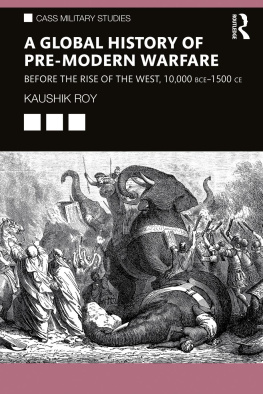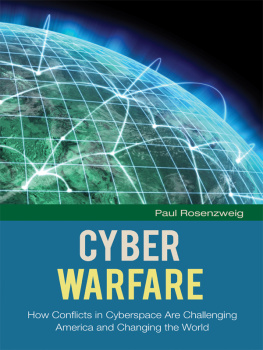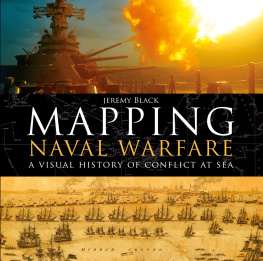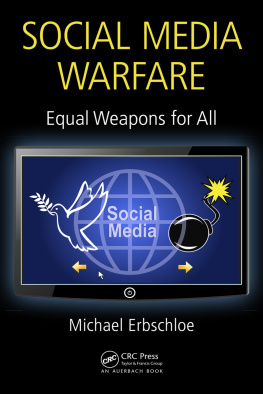Technology and War
From 2000 B.C. to the Present
A Revised and Expanded Edition
Martin van Creveld

THE FREE PRESS
A Division of Macmillan, Inc.
New York
Maxwell Macmillan Canada
Toronto
Maxwell Macmillan International
New York Oxford Singapore Sydney
Copyright 1989, 1991 by Martin van Creveld
All rights reserved. No part of this book may be reproduced or transmitted in any form or
by any means, electronic or mechanical, including photocopying, recording, or by any information
storage and retrieval system, without permission in writing from the Publisher.
The Free Press
A Division of Macmillan, Inc.
866 Third Avenue, New York, N. Y. 10022
www.SimonandSchuster.com
Maxwell Macmillan Canada, Inc.
1200 Eglinton Avenue East
Suite 200
Don Mills, Ontario M3C 3N1
Macmillan, Inc. is part of the Maxwell Communication
Group of Companies.
First Free Press Paperback Edition 1991
Printed in the United States of America
printing number
1 2 3 4 5 6 7 8 9 10
Library of Congress Cataloging-in-Publication Data
Van Creveld, Martin L.
Technology and war: from 2000 B.C. to the present / Martin van Creveld.A rev. and expanded ed., 1st Free Press ed.
p. cm.
Includes bibliographical references and index.
ISBN 0-02-933153-6
ISBN-13: 978-0-029-33153-8
eISBN-13: 978-1-439-14397-1
1. Military art and scienceHistory.
2. Military history.
3. TechnologyHistory.
I. Title
U27.V27 1991
355 .009dc20 91-21538
CIP
For Dvora
to whom this book owes a lot
and I, everything
The one thing more important than opulence is defense.
ADAM SMITH
CONTENTS
PART I
The Age of Tools,
from Earliest Times to 1500 A.D.
PART II
The Age of Machines,
1500-1830
PART III
The Age of Systems,
1830-1945
PART IV
The Age of Automation,
1945 to the Present
PREFACE
THE PRESENT BOOK, which has been several years in the writing, could never have seen the light of day without the assistance of many people who at various moments gave their advice, read drafts, or engaged me in discussion. Unlike the ideas behind some of my other books, the idea underlying this one was my own. However, I would have thrown in the sponge many times had it not been for the consistent support of Andy Marshall, head of the Office of Net Assessment, Department of Defense. Also supportive of my work, and as patient in bearing with my numerous periods of despair, has been Dr. Steve Canby, defense analyst in Washington, D.C.
I have had the usual numerous splendid arguments with my good friends, Stephen Click, Seth Carus, and David Thomas, whose expert knowledge and well considered counsel were of greater value than I can ever repay. The same applies to Eado Hecht, Amnon Finkelstein and Lt. Col. (Res.) Moshe Ben David, three students who gave as good as they got. Detailed criticisms and constructive advice in regard to part or all of the study have been offered by Zeev Bonen of Israel Weapon R&D Authority, Gen. (Res.) Franz Uhle Wettler, and Fred Reed; I am grateful to all of them. Finally, thanks are due to my son Eldad, who although young in years often made telling points in discussion, and to my stepchildren Adi and Yoni Lewy who helped create the kind of atmosphere in which research can be conducted and work done. Much of what merit this book may have is due to all of them, whereas its faults are mine alone.
At one stage of its development, the present study was supported by a grant from the Ford Foundation.
LIST OF ACRONYMS
AWACS | Advanced Warning and Control System |
BMD | Ballistic Missile Defense |
ELINT | Electronic Intelligence |
EMP | Electro Magnetic Pulse |
ENIAC | Electronic Numerical Integrator and Calculator |
FLIR | Forward Looking Infra Red |
HUD | Head Up Display |
ICBM | Inter Continental Ballistic Missile |
MAD | Mutual Assured Destruction |
MIRV | Multiple Independent Reentry Vehicles |
MOS | Military Occupation Specialty |
SALT | Strategic Arms Limitation Talks |
SDI | Strategic Defense Initiative |
SLBM | Submarine Launched Ballistic Missile |
TERCOM | Terrain Contour Matching |
WWMCCS | World Wide Military Command and Control System |
Introduction
THE PRESENT VOLUME rests on one very simple premise which serves as its starting point, argument, and raison dtre rolled into one. It is that war is completely permeated by technology and governed by it. The causes that lead to wars, and the goals for which they are fought; the blows with which campaigns open, and the victories with which they (sometimes) end; the relationship between the armed forces and the societies that they serve; planning, preparation, execution, and evaluation; operations and intelligence and organization and supply; objectives and methods and capabilities and missions; command and leadership and strategy and tactics; even the very conceptual frameworks employed by our brains in order to think about war and its conductnot one of these is immune to the impact that technology has had and does have and always will have.
In this book, my aim is to present a historical analysis of the role technology has played in the development and transformation of war. Unlike the vast majority of the very numerous works that have been written on the subject, however, the present study will not focus solely on the evolution of weapons and weapon systems and their effect on combat. On the contrary, it assumes that behind military hardware there is hardware in general, and behind that again there is technology as a certain kind of know how, as a way of looking at the world and coping with its problems. War is impacted by technology in all its forms; with the result that, subject only to the limits of the available space, all will have to be taken into account.
To use a simple analogy, military technology affects warfare like waves spreading from a stone thrown into a pond. The disturbance is strongest at the point of impact; the farther the ripples spread, the weaker and less noticeable they become. And the farther they go, the more likely they are to lose their identity by becoming intermixed with ripples thrown up by other stones or reflected back from the ponds banks. Similarly, weapons and weapon systems make their power felt principally during combat, but war consists of much else besides. Apart from tactics, there are operations, strategy, logistics, intelligence, C3 (command, control, communication), and organization, to mention but a few. Naturally, all of these are affected by weapons, but all are also strongly influenced by other kinds of hardware, as well as by technology in its abstract sense. Thus we must begin by taking into account such mundane things as roads, vehicles, communications, timekeepers, and maps, and end by considering the most complex problems of technological management, innovation, and conceptualization.
To emphasize the way in which the study attempts to deal with the whole of technology as it is used in war, rather than dealing with weapons and weapon systems alone, its structure does not follow traditional lines. It is not divided into such chapters as the age of edged weapons and the age of gunpowder. Instead, its organization is intended to reflect the development of technology as a whole. Accordingly, Part I starts slightly before 2000 B.C. and ends around 1500 A.D. Though this period can be subdivided in many ways, it is dominated by a single unifying theme. From Archimedes pulleys to Leonardos crank-driven war machines, most technologyand military technology in particularderived its energy from the muscles of animals and men. Hence I call this era the Age of Tools.










